Make your home unique want everyone and one of the ways - stucco decorations. Once all the elements were manually made, it was worth it an incredible money and was not available to everyone. Modern technologies allow you to produce not too complex elements massively, which reduced their price. And it looks stucco in the interior, everything is also amazing, even in modern interiors, in kitchens and relatively small rooms.
Types of stucco and materials
Molding decorations are distinguished by the scope of application: for decorating buildings and interiors. Make them from different materials. Gypsum, polystyrene and polyurethane are used mainly in the premises. This is due to the characteristics of the materials: Gypsum is afraid of moisture, polyurethane and polystyrene foam - direct sunlight. For decoration of buildings, a special stucco is used from the polymer (glassfibobeton), sandbetone, shamota. But the price of these jewelry and the cost of mounting is high.
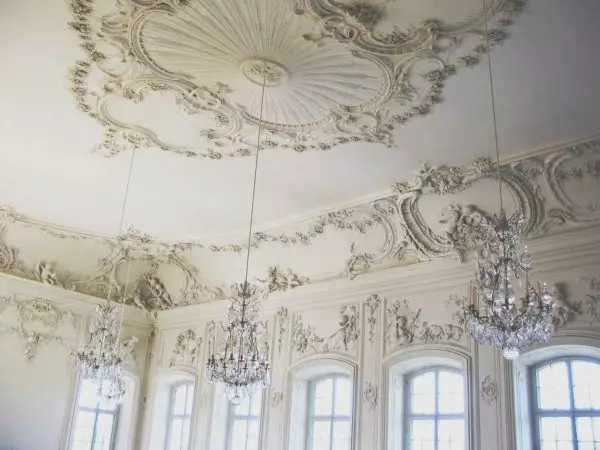
Leponin in the interior: Such complex patterns are definitely gypsum decorations.
Is it worth using polystyrene foam?
Interior decorations made of polystyrene foam (foam) are the most affordable on the market. They are very light and flexible, mounted very simple - on glue. Due to the flexibility, they can be installed on not very even walls. And it seems everything is not bad, but, due to the features of the material, the surface is slightly grainy, not too dense. With plaster decor, polystyrene stucco is incomparable in general - too visible difference. But inexpensive.
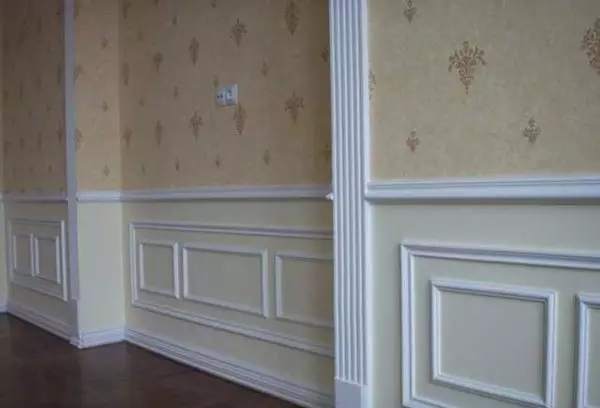
Polystyrene foam larger
When using moldings, eaves or other products made of polystyrene foam, after installation, it is better to paint it, otherwise after a while the product will yellow. Paint stucco with water-level paint, but you can both any other composition that is compatible with the base.
The polystyrene foam stucco is worth using only if the budget is very limited or if you will soon make repairs again. In other cases it is better to choose between polyurethane and plaster.
Gypsum or polyurethane?
In the interior, usually either polyurethane or gypsum stucco. But what to choose? What to give preference? To answer the question, you need to know the advantages and disadvantages of stucco from both types of materials.
Gypsum stucco is more diverse, always has a clear figure, is made of natural material, it does not age, does not change the performance characteristics (if not mocking). But she is heavier, fragile, due to which it is more difficult in the installation. The minuses should be attributed to a higher cost. Although, if you take a high-quality polyurethane stucco, it costs almost the same. But the difference is still there - at the expense of the value of the installation (the gypsum is higher, as it is more difficult to install it).

Until you touch, do not understand, high quality polyurethane foam in front of you or gypsum
Article on the topic: 3D Floors: 3D and photos, bulk with your own hands, Flashing three D transparent, step-by-step instructions and photos
Polyurethane stucco has a small weight, does not be afraid and does not crumble, it is not afraid of dampness, easier in installation. But she has its own, and serious, disadvantage: Very often, cracks appear at the junctions. Most of all "crack" If the interior stucco was mounted on concrete, brick, wooden walls, on a cellular concrete. You can rarely see cracks if the decor was glued to plasterboard walls. This is due to the different reaction of materials on temperature and moisture. At drywall and polyurethane they are close, so the joints "do not tear." In other materials, this problem is present. It is also worth saying that the amount of cracks depends on the qualifications of the installers: some crack appears one on the room or several rooms, others have several pieces in each room.
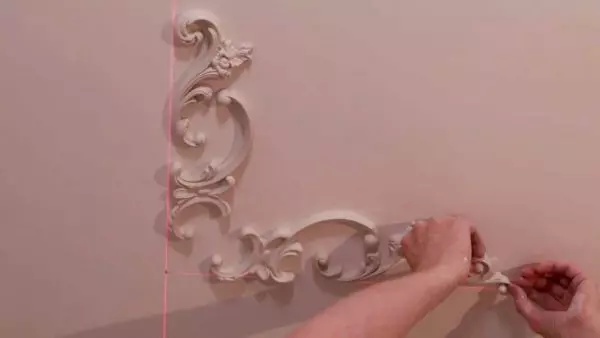
It's exactly gypsum elements
Manufacturers of polyurethane stucco are advised to use special joints for joints, the connection is not to produce in a straight line, but at an angle of 45 °, when installing, do not regret the road with expensive glue and impose it to glued joints with excess. The outstretched glue wipe, or after drying it. This is an additional, and labor-intensive operations (especially the trimming of dried glue, as well as the fitting of the pattern when the corner is connected), therefore, not all brigades are used. Much more often glued the polyurethane stucco jack, and impose glue by a very thin layer, and if it is not enough, empties close with putty. The strength of such a connection is small, therefore cracks appear. And in large quantities.
Methods of installation
The stucco in the interior of any type is attached to the adhesive composition, just this composition for different materials. The surface to which stucco elements is glued must be previously aligned, purified from dust, dirt, dried. The decor elements must be put into the room, to withstand at least a day, but better - two. During this time, the temperature and humidity of the decor and the base are leveled.
The adhesive composition is also applied on the stucco element, and to the surface to which it is glued is evenly distributed. Then you need to wait 10-20 minutes, after which it is an element of the decor to place, align, press well and hold for some time - while the glue does not grab. If heavy or bulk elements are mounted, they can be fixed using multiple screws. Then the fasteners can be removed (or leave), the holes to close with a putty, after drying to polish.
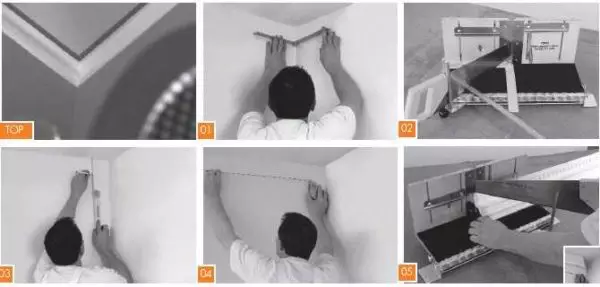
Mounting stucco installation of any type of equal
When strengthening the stucco, in places of joints, irregularities, height differences, incidence of drawing are very often formed. These disadvantages are eliminated using sandpaper with small grain, folded in several layers. This "tool" process the joint to the complete coincidence. Moreover, with a polyurethane grinding under the layer of white paint (primer), a yellow material is manifested - polyurethane itself. So that the seam was inconspicuous, it is better to remove the entire primer layer to the material, then put a putty, after drying it.
This is the overall technology of stucco stucco. But there are features of each of the materials, about them and talk more.
Article on the topic: Water warm floor: installation with your own hands, laying scheme and system, installation of heating from an electrocotel
Features of gluing polyurethane and foam stucco
Polyurethane is a stucco of good quality, with a clear pattern, outwardly does not differ from the gypsum. Tactile (touched), the difference is easy to determine, but "on the eye", especially under the ceiling, almost unreal. But polyurethane stucco has two essential drawbacks: cracks that eventually appear on the joints and the change in size.

The stucco decor for the interior of polyurethane foam everyone is good ... That's just cracked
The change in the size of the polyurethane stucco for the interior becomes noticeable in six months or more. If you did not glue for some reason some decor, leaving some details "for later", after a few months you just can not dock them. Even if everything was exactly earlier and combined. Moreover, the difference will be not only in length, but in width. "Shrinkage" can be 2-5 mm, depending on the density of the material and the shape / size of the element. Therefore, do not leave the shortcomings, mount the entire decor immediately.
As already understandable, due to the "shrinkage" of polyurethane (and even due to a different thermal and temperature expansion of the decor and walls / ceiling), cracks appear in the place of the jacks of items. In order for cracks less, the elements should be poked at an angle of 45 °. We pay your attention: all the place of the joints are made at an angle. Not only in the corners. Even if two straight elements are jammed - eaves, plinth, moldings - their edges are cut off at an angle, increasing the area of the joint. Thus, the amount of adhesive increases, the connection strength increases, it is less common.
How to glue gypsum stucco
Gypsum stucco in the interior can be more diverse, it is possible to make individual jewelry or from ready-made small fragments to collect a unique pattern. Gypsum decor is also mounted using glue, but the composition is different. There are differences and in the method of application: before applying glue gypsum fragments for a couple of seconds plunge into water. Then an adhesive composition is applied to the surface, a spatula with small cloth is evenly distributed over the surface. Next, everything is familiar: put it in place, pressed, leave to dry.When installing large fragments of plaster stucco, on their back surface, notches of a couple of millimeters are applied, after which the adhesive composition is applied. After installation, massive elements are fixed using self-tapping screws. Their quantity depends on the mass of the fragment and on your desire. All holes are sweeping, after drying, polished. The joints are also closed, there are no problems with them.
Stucco in the interior
If we speak as a whole, the stucco products can be divided into two categories: finished decor and individually made products. Unique decorations make only plaster - technology allows, but the cost of such a decor is much higher. Therefore, it is often combined - where it is possible to put parts from mass collections, complementing individual fragments.

Small part collection
Ready decor There are various types: plinth, moldings, eaves, columns, semi-colonry, pilasters, sockets, angular elements. These elements are in polyurethane, foam and gypsum collections. Enterprises engaged in the manufacture of plaster decor usually make some more small parts that standard design can be supplemented.
Article on the topic: Cross-embroidery Schemes: White storeroom, photo of a snowman, fox and bullfinches, quickly in PM, how to do cool
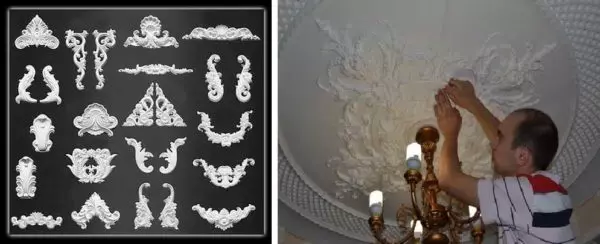
Here are such small details you can diversify the stucco decor
This is not an individual manufacturer, but already not a massive release, especially since decorating it is possible to choose to your taste, combining different elements.
In a classic interior
Molding decorations are characteristic of interiors decorated in styles of classical directions. But such premises should be high and spacious. Then even the most complex decorative designs look organically.

This option is different as "palace" you will not call
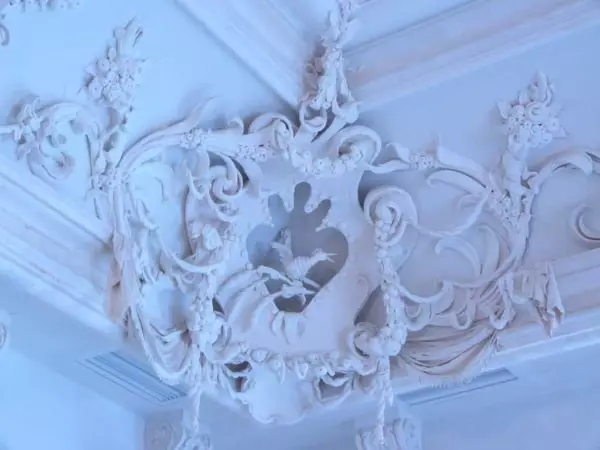
Similar elements are only exclusively plaster
Columns, cornice and painting on the walls - the classic of the genre
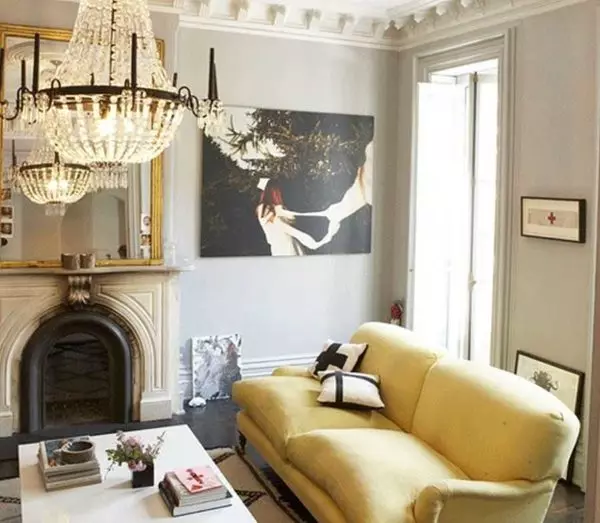
The top of the ceiling is decorated with a top of the ceiling, a high plinth is made, design of door and window openings. Classic fireplace adds charm
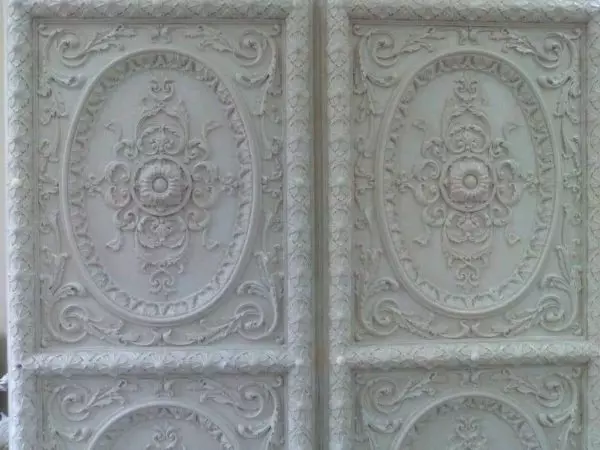
Gypsum decorative panels for wall decoration

Such rooms and in jewelry do not need
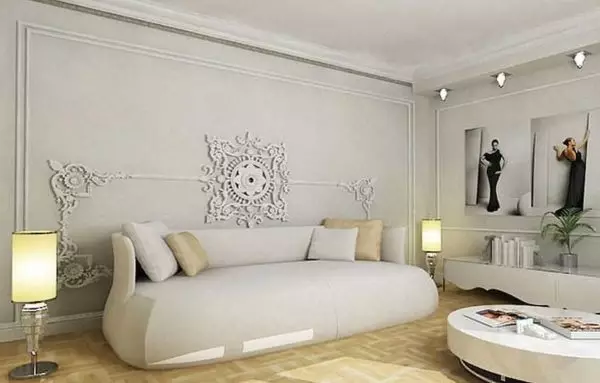
Classic with modern sound: A peculiar panel made of plaster stucco
Stucco and modern interior style
The current pace of life dictates their interior design rules: everything should be more concise. How would it seem to combine stucco decorations and modern design? It is very possible. The most common way is to make an angle between the wall and the ceiling of the cornice. It can be wide or not, can be with a pattern, ornament or just smooth with several protrusions. Such a decoration fits into most of the interiors of the modern direction.
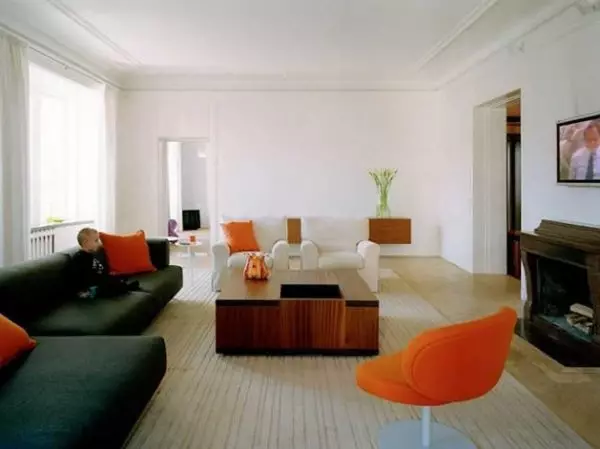
On the example - wide eaves in the modern interior (gypsum or polyurethane)
If the design is not too ascetic, it is quite suitable and curly elements, sockets, various decorative panels, eaves and other "pieces".
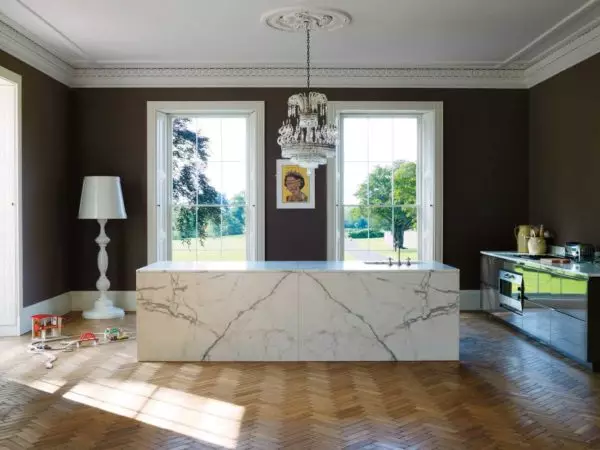
Stucco socket on the ceiling looks organically

Glass partition in a metal frame and openwork stucco highlight each other

This option can be called "Modern Classic"
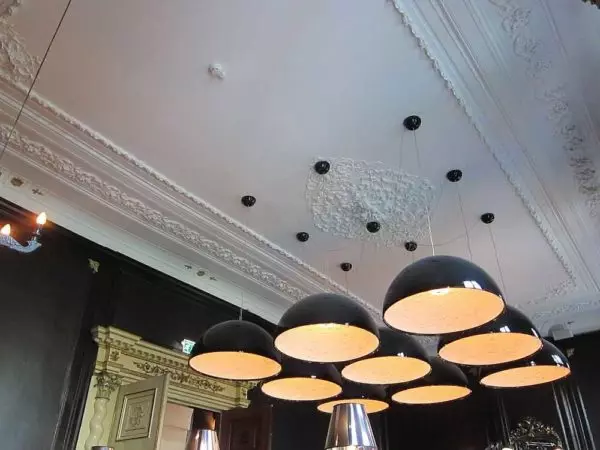
Combining incompatible is art
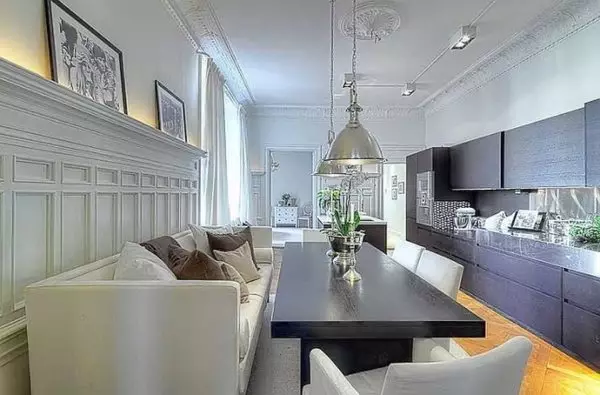
This interior with minimalism, but the stucco does not spoil it at all

And one more example of modern sound decoration sound
Photo idea
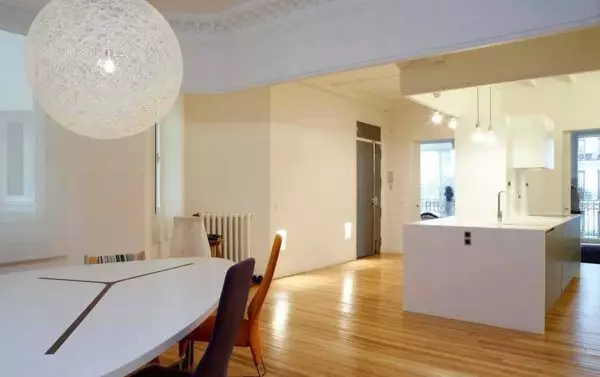
Very often, stucco products are used when making multi-level ceilings.

New collections are being developed, just for use in modern interiors.
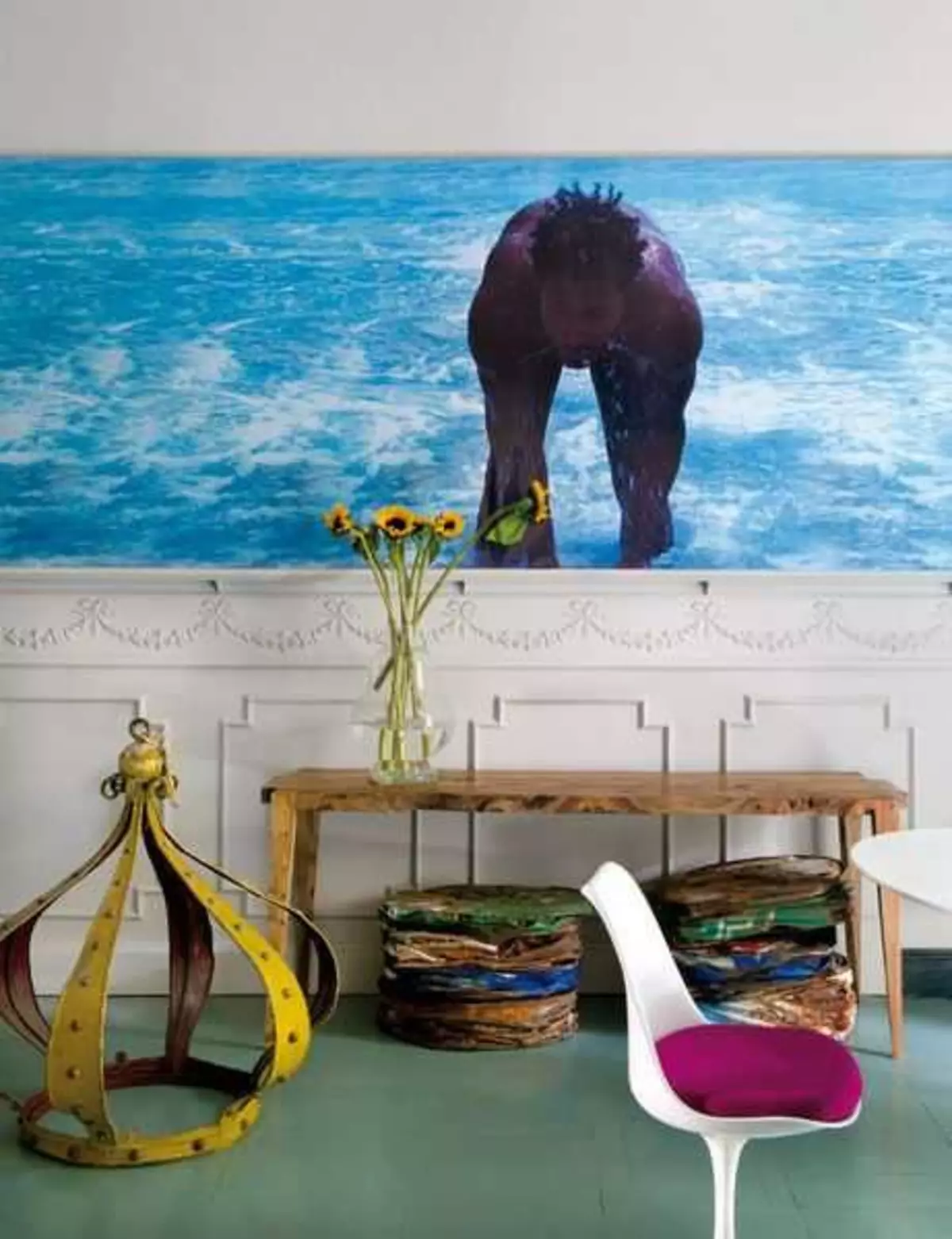
Cabinals and Frames - Classic Receptions, Interior - Modern Art Deco
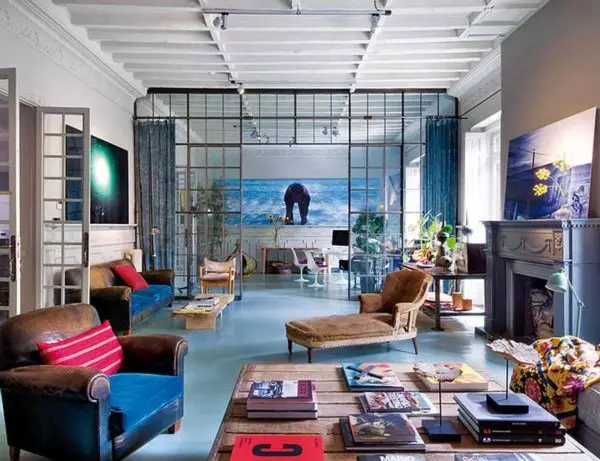
Even with wooden beams, stucco does not conflict
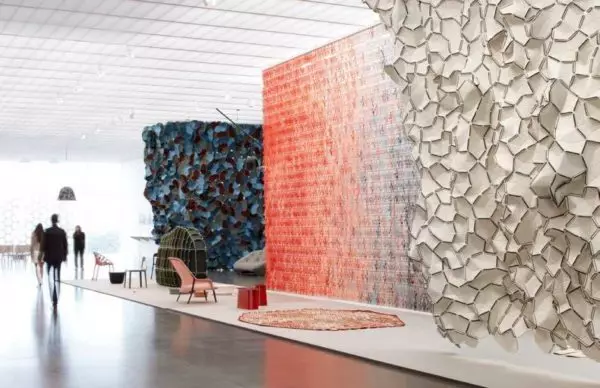
Examples of gypsum panels for wall decor (from the exhibition)
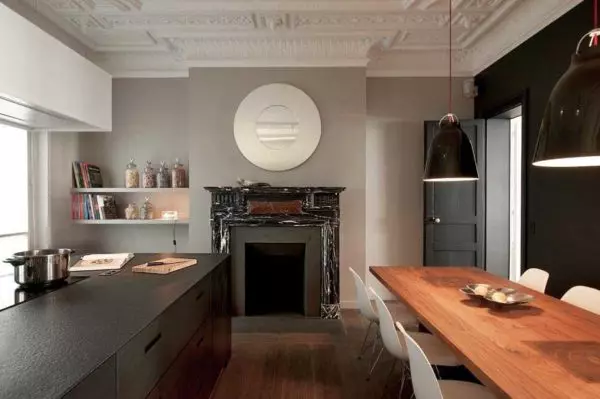
Stucco in the interior of a large and modern kitchen does not seem too much
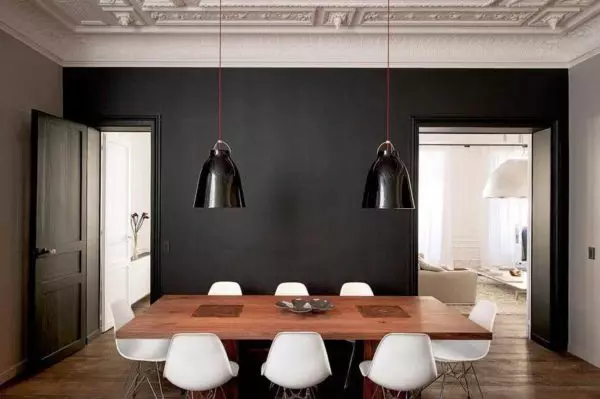
The dining room is traditionally drawn up stucco
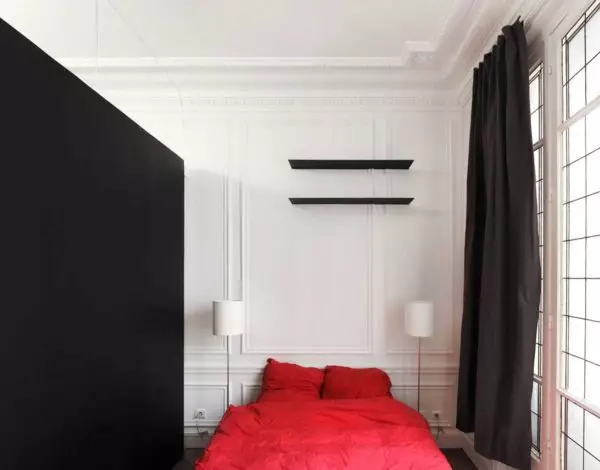
Molding decorations in the bedroom are more than appropriate. They add softness and intimacy into the situation

Bright bedroom decorated with stucco decor
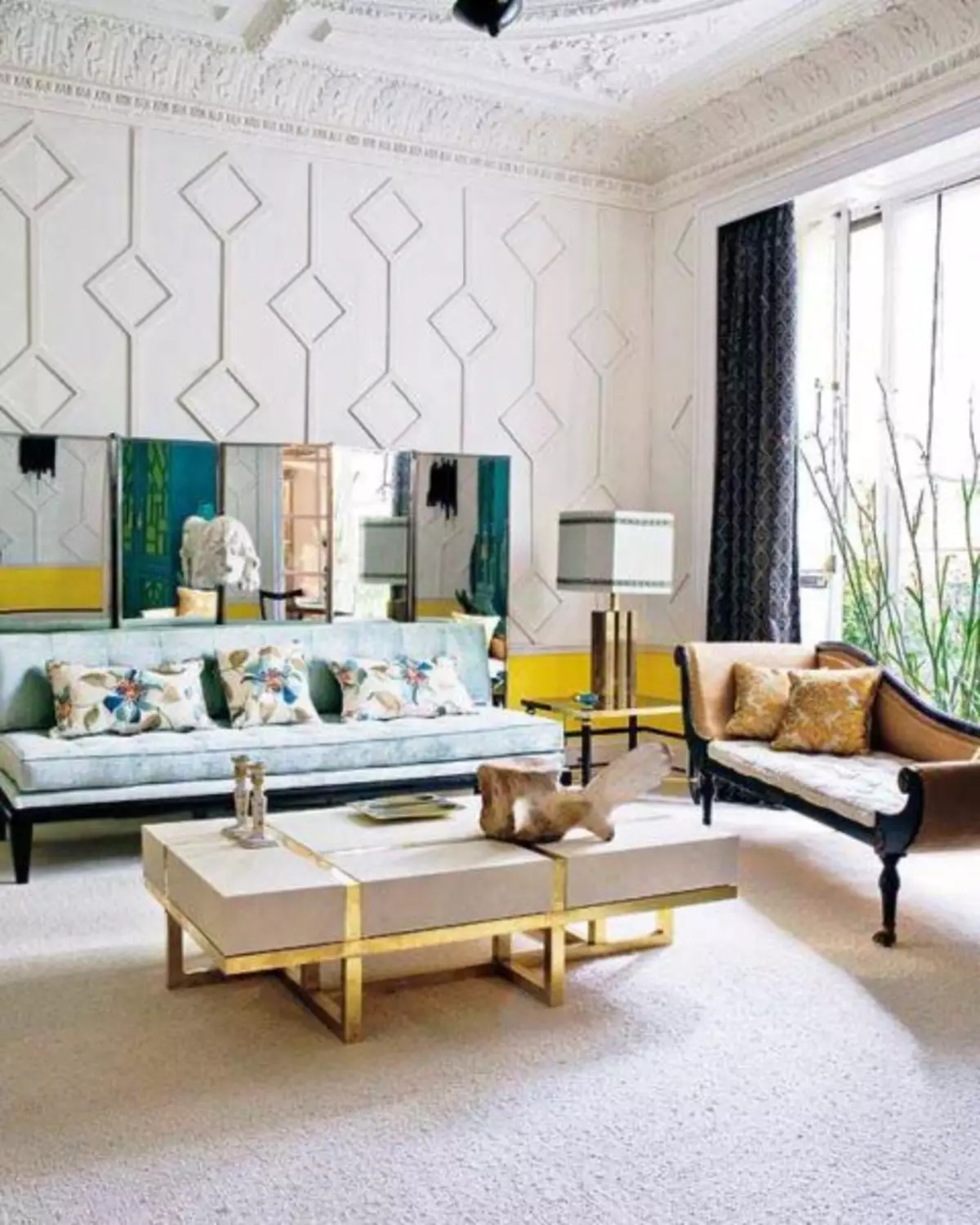
Gypsum openwork on the ceiling is emphasized by a geometric pattern on the walls.

Cuisine - Studio and stucco ...
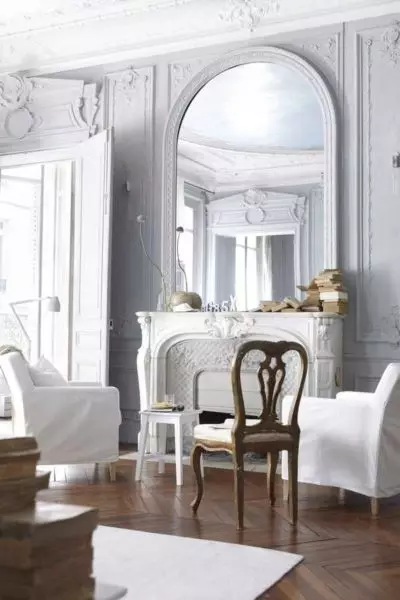
Registration of stucco mirrors - Classic reception

Main focus on multi-tiered cornice
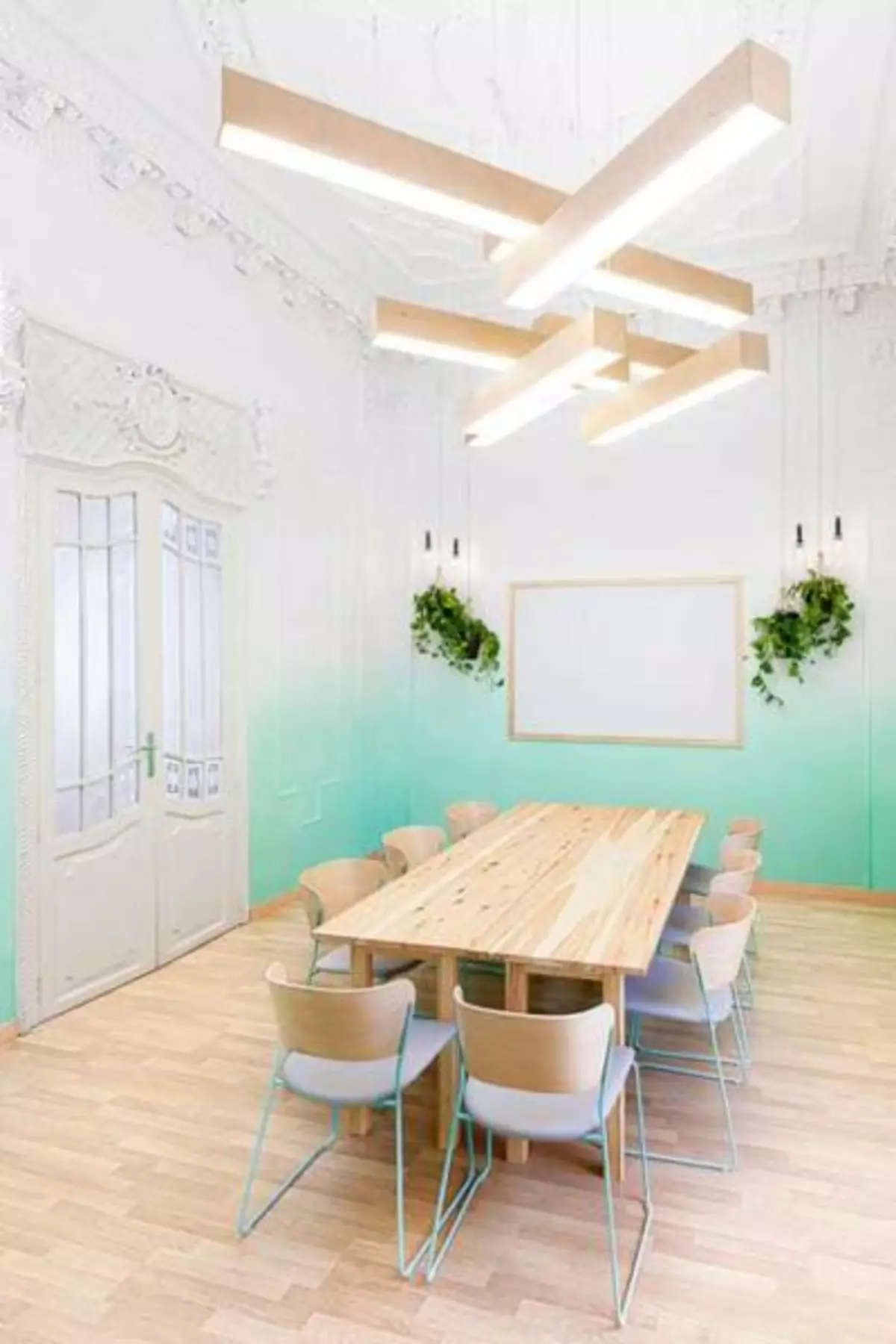
Combination of classic and conceptual elements
